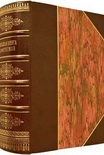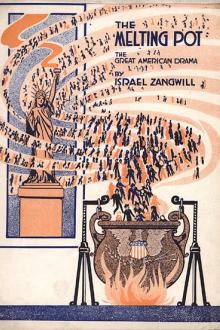No Modernism Without Lesbians, Diana Souhami [love books to read txt] 📗

- Author: Diana Souhami
Book online «No Modernism Without Lesbians, Diana Souhami [love books to read txt] 📗». Author Diana Souhami
Never again was cellophane sanctioned for a Broadway stage.
Four Saints had another run in November 1934 with the same cast in a downtown Chicago auditorium. Gertrude and Alice combined attending this with a six-month lecture tour in different states. They sailed on 17 October 1934 on the SS Champlain and there were flowers in their first-class cabin from Lily de Gramont. They stayed first in New York, at the Algonquin Hotel on 44th Street. There were pictures of them on the front pages of most of the papers and headlines like ‘Gerty Gerty Stein Stein Is Back Home Home Back’. In Times Square, in revolving lights, were the words ‘Gertrude Stein has arrived in New York’. ‘As if we did not know,’ said Alice. Gertrude met up with Natalie Barney, who was in America to see her lionized, and they went for a walk in Central Park. Natalie asked her why she crossed the road without waiting for traffic signals. ‘All these people, including the nice taxi-drivers, recognize and are careful of me,’ Gertrude replied.
Curtis Air gave her and Alice complimentary first-class tickets to fly from New York to Chicago for the third run of Four Saints. Gertrude had to move from the VIP box of honour to an orchestra seat because she was deaf from the plane. At the after-theatre party she met George Gershwin, who was so taken with the Harlem choir he hired them the next year when his opera Porgy and Bess opened in Boston. John Houseman noticed Gertrude had dark spots on her lips and wondered if they were cancerous.
At home with success, Gertrude gave lectures at the Colony Club New York and at the universities of Columbia, Princeton and Washington. In December 1934, she and Alice had tea at the White House with Eleanor Roosevelt and her lover, Hick – Lorena Hickok, who lived there for the twelve years of Roosevelt’s presidency. Gertrude then continued her tour to Toledo, Indianapolis, Houston, San Francisco, Pittsburgh… The years of negation were swept away.
I cannot say that we don’t like it we do like it wonderfully every minute and everything has worked out so beautifully… I am delighted really delighted with the way all the audiences take the lectures and it makes me happier than I can say.
She wanted more life for the opera but the people involved moved on and Virgil Thomson believed it was too soon for a new production; the original was too much in people’s minds. He thought Four Saints would take its place in classical repertory.
Reading of Gertrude’s success, James Joyce asked Virgil Thomson to compose a ballet based on a chapter about children’s games in Finnegans Wake. He hoped it would be produced at the Paris Opéra with choreography by Léonide Massine. Thomson declined on the grounds that ballets don’t have words, but his real reason was the rivalry between Gertrude and Joyce. He did not wish to play one against the other and his first loyalty was to Gertrude.
She and he then had a falling out over money. Gertrude, or perhaps Alice, queried their fifty/fifty division of profits. Gertrude posited that the project only had life because of the commercial value of her name. Thomson was miffed:
If you knew the resistance I have encountered in connection with that text and overcome, the amount of reading it and singing it and praising it and commending it I have done, the articles, the lectures, the private propaganda that has been necessary in Hartford and New York to silence the opposition that thought it wasn’t having any Gertrude Stein, you wouldn’t talk to me about the commercial advantage of your name.
There was anyway not much money to be had for anyone, given the huge cast, lavish production costs and a run of only six months. They patched up their quarrel enough to embark on a second opera, The Mother of Us All, about the women’s suffrage movement in America, with the women’s rights activist Susan B. Anthony as the central figure, but it was not put on until after the Second World War and Gertrude died without seeing it brought to life. It became one of the most widely performed American operas.
the end of an era
In January 1938, Gertrude and Alice moved from their Paris home of twenty-five years in rue de Fleurus. The landlord wanted their apartment for his son. They found a new apartment at 5 rue Christine in the Latin quarter. It had once been the home of Christina, Queen of Sweden and had the original seventeenth-century wall boiseries. Janet Flanner arrived on moving day with a pot of white flowers. Gertrude gave her a pencil and piece of paper and said, ‘Put the pot anywhere and make me an inventory of my art.’ She had never bothered to do this before. Janet Flanner’s inventory was a rather vague jotting, but she recorded 131 paintings including five Picassos ‘still in the china closet’. She listed Picasso’s portrait of Gertrude, his Young Girl with a Flower Basket, a ‘Full Length Nude’ from his Rose period, and nineteen small works ‘including four perfectly matched heads of the 1913 Cubist period, rare in their unity’. She listed various Cézannes and two still lifes by Braque. None of the pictures was insured because that would cost too much.
this preposterous masculine fiction
In Gertrude’s view, the only ones really grateful for the 1939–45 war were the wild ducks that lived in the marshes of the Rhône. Hunting guns were requisitioned so no one could shoot at them.
They act as if they had never been shot at, never, it is so easy to form old habits again, so very easy.
Right up until the summer of 1939, she would not believe there could be another European war. That ‘this preposterous masculine fiction’, as Virginia Woolf termed it, would again engulf the world.





Comments (0)